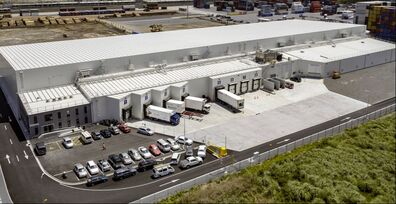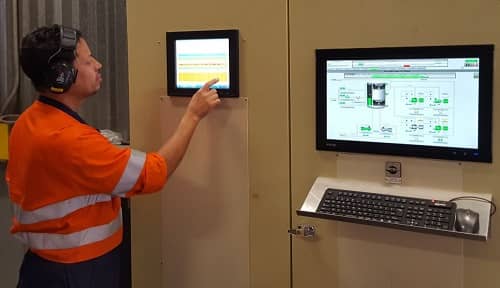One of the world’s largest cold storage providers is enjoying an 11% reduction in energy costs at a number of its facilities around New Zealand following the installation of sophisticated software that automatically monitors and controls electricity consumption.
|
Lineage Logistics is the world’s largest provider of temperature controlled logistic solutions. In New Zealand, they operate 19 sites and refrigeration is by far the largest energy cost. Most of the sites use ammonia as a refrigerant, distributed from a central plant room to fan coil units in the cold stores. Based on the products each store holds, temperature parameters vary considerably.
11 of these sites have been equipped with Quasar Control Industrial (QCI) – a powerful energy monitoring and control software solution developed by Quasar. |
|
In essence, says Graham Klein, National Engineering Manager at Lineage Logistics, “QCI monitors the energy consumption at each of the stores and, based on temperature parameters I’ve set, turns the fans and compressors on and off as required.
“And because our various energy contracts are programmed into QCI, it takes advantage of cheaper tariff periods. With a direct internet feed, spot prices can be read into the system and every sort of TOU contract can be uploaded too. This level of control has allowed us to structure our energy use and reduce the lines fee component of our energy bill.” One of the technology’s most appealing features, he adds, is its simple interface. “It’s given me the ability to manage and control energy consumption at our sites without specialist programming knowledge." |
In particular, I like the easy-to-understand, real-time dashboards and the historical reporting tools. These reflect the real savings – at a glance – in both kilowatt-hours and dollars. The savings are measured off electricity meters, so they’re an accurate indicator of the technology’s success.
Management View
“From a management perspective, I now have an instant overview of how the sites are performing – at any time of the day.”
I receive detailed graphs and reports – generated automatically on a daily/weekly/monthly basis – via email. I used to spend hours getting my energy data collated each month – I now have a summary every Monday before I get to work.
Equally appealing, he adds, is the multi-site KPI reporting offered by the technology.
“Data from the sites is collected by a central server. QCI’s reporting tools has given me the ability to compare third party data with energy – for example, the volume of pallets moved/stored/blast frozen relative to the energy used. This is valuable information our engineering and senior management teams can use for fine-tuning overall operations.”
“Data from the sites is collected by a central server. QCI’s reporting tools has given me the ability to compare third party data with energy – for example, the volume of pallets moved/stored/blast frozen relative to the energy used. This is valuable information our engineering and senior management teams can use for fine-tuning overall operations.”
As an automated solution, says Graham, QCI has also eliminated the temperature fluctuations and human operator issues that often plague ‘manual’ load-shedding regimes. “Human error is removed from the equation, the system will never forget to start a store or allow a store to get too warm. QCI will also send email alerts if events happen that may cause a room to go out-of-spec, allowing us to react to problems long before our plant alarming system registers a temperature fault.”
Bottom-line Benefits
|
The obvious one, says Graham, is the 11% fall in energy consumption – largely due to flattening the load profile and reducing peak demand charges, shifting the energy load to cheaper periods and shedding unnecessary load.
“Because savings are reported as dollars as well as kilowatt-hours, energy management’s become a tangible concept for non-technical staff. We now have real-time visibility about how the changes we make affect our energy use. The system effectively acts as a data-logger – it’s like having a metering package and SCADA rolled into one. “A somewhat unexpected bonus is that we’ve been able to make better use of our existing plant. This not only translates into capex savings on plant upgrades but has also extended the life of existing equipment.” |
Quasar Control Industrial (QCI)
QCI is designed for controlling refrigeration, heating, air-conditioning and water pumping systems. It can be applied to any industry where devices can be turned off for periods of time.
The software will automatically shed selected loads to avoid high-tariff periods, restore loads in low-tariff periods and cap demand to minimise peak demand charges. QCI can be integrated into existing systems, but can also operate as a standalone solution.
The software will automatically shed selected loads to avoid high-tariff periods, restore loads in low-tariff periods and cap demand to minimise peak demand charges. QCI can be integrated into existing systems, but can also operate as a standalone solution.



